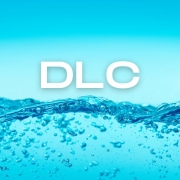Alternative clouds are vulnerable to demanding buyers
Although big-name hyperscalers such as Amazon, Google and Microsoft dominate the cloud arena, other companies also believe they have a role to play. Vultr, OVHcloud, Linode, DigitalOcean, Bluehost and Scaleway, for example, don’t offer huge portfolios of cutting-edge products but their products focus on simplicity and low cost for smaller businesses with relatively straightforward requirements.
The hallmark of the cloud is the ability to provision resources remotely and pay by credit card. But these resources are no longer just virtual machines — hyperscalers have evolved to offer vast portfolios, from software containers to artificial intelligence. Microsoft Azure claims to offer 200 products and services, for example, with each product having different variations and sizes in different regions and at different prices. Hyperscaler cloud providers have millions of individual line items for sale. Users must choose the best combination of these products for their requirements and architect them into an application.
Not all users need to build highly scalable applications across international borders utilizing the latest technology. Many companies just want to develop simple web applications using standard tools and are willing to use standard products to deliver their applications, rather than demanding specific capabilities.
With limited portfolios and limited variations, smaller alternative cloud providers can focus on delivering a few products well:
- They focus innovation on squeezing costs and maximizing efficiency rather than on developing broad ranges of cutting-edge products.
- Most have a handful of locations offering a few services (usually virtual machines, storage and, more recently, containers) in a limited range of configurations (such as a few different sizes of virtual machines).
- They can focus on a region or country so that specific local demands for data sovereignty or ownership can be met.
- Customer service and support is often more personal with an alternative cloud provider than a hyperscaler.
Hyperscalers are upfront that users must build resiliency in their applications using multiple availability zones (akin to data centers) and cloud services such as load balancers (see Public cloud costs versus resiliency: stateless applications). Alternative cloud providers don’t necessarily offer such capabilities. Users of alternative cloud providers often seek simplicity, without the need to architect decoupled, multivenue applications. The result is that users – almost inadvertently – rely more heavily on alternative cloud providers’ data centers to deliver resiliency than they might in a hyperscaler data center, where the application itself has been designed to be resilient. This dynamic is difficult to quantify but there are examples. Last year, a fire destroyed one of OVHcloud’s Strasbourg (France) data centers. The local fire service said the data center had neither an automatic fire extinguisher system nor an electrical cut-off mechanism. OVHcloud is now facing a class action lawsuit from 140 clients that were impacted, demonstrating the reliance these companies had on OVHcloud.
The challenge with the alternative provider model is that it reduces cloud services to a commodity where price, not innovation or quality, is a differentiator. As a result, alternative providers are under more pressure than hyperscalers to keep prices low. With less diverse portfolios, price pressure on a single service can impact overall margins more than a hyperscaler with other services to offset any losses. OVHcloud’s fire demonstrates that simplicity doesn’t necessarily mean resiliency.
In June 2022, DigitalOcean increased prices on nearly all its services. We believe some of this price increase is due to rising costs. Inflation is high in many economies and supply chain issues are affecting the timely and inexpensive delivery of servers and other equipment. The COVID-19 pandemic has triggered a movement of workers, reducing supply and, anecdotally, raising salaries. An innovation-driven hyperscaler might be able to absorb some of these costs in its margins; it is harder for a cost-differentiated alternative cloud provider.
In the short term, users may question whether they are getting enough value from alternative cloud providers to justify a larger bill (because of price increases). Migrating from an alternative cloud provider can be simpler than from a hyperscaler as they offer simple services with have many commonalities across providers and are, therefore, easier to move.
Hyperscaler services are usually more proprietary, including application programming interfaces coded into the fabric of applications that can be expensive to migrate. In addition, hyperscalers are increasingly opening new data centers in new countries, offsetting some of the alternative cloud providers’ value in locality. As a result, alternative cloud providers are more vulnerable to internal cost increases and buyers demanding lower prices than hyperscalers.
Alternative cloud providers are also vulnerable to a broader demand for cutting-edge technology. In the longer term, will cloud users see IT as something that has to operate cheaply and simply while the business focuses on bigger things, or will they want to pay more for their IT and invest in skills to build more complex yet strategically important applications? Small businesses want to use innovative technologies such as the internet of things, cloud-native development or machine learning to build differentiated and resilient applications that drive the business forward — even if these innovations come at a cost premium.











